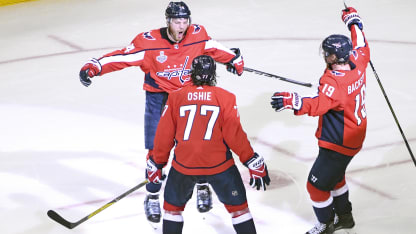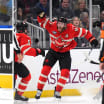It happened three times in Washington's 6-2 victory in Game 4 of the 2018 Stanley Cup Final at Capital One Arena on Monday. The Capitals went 3-for-5 on the power play and took a 3-1 lead in the best-of-7 series heading into Game 5 at Vegas on Thursday (8 p.m. ET; NBC, CBC, SN, TVAS).
Washington is one win from its first Stanley Cup championship.
"Our power play was good," Trotz said. "They took penalties and we're OK with that if they want to take penalties."
Especially considering how the Capitals are producing with the man-advantage, thanks in part to being flexible in their power-play structure.
Washington's typical power-play setup has two players down low, one at each face-off circle and one quarterback at the point. The objective is to get the puck to captain Alex Ovechkin, who usually is positioned at the left dot with his stick cocked in the air, waiting to shoot.
When the Golden Knights penalty kill started shifting toward Ovechkin's side of the ice, the Capitals compensated by using him as a decoy, opening up other options and freeing up ice.

















